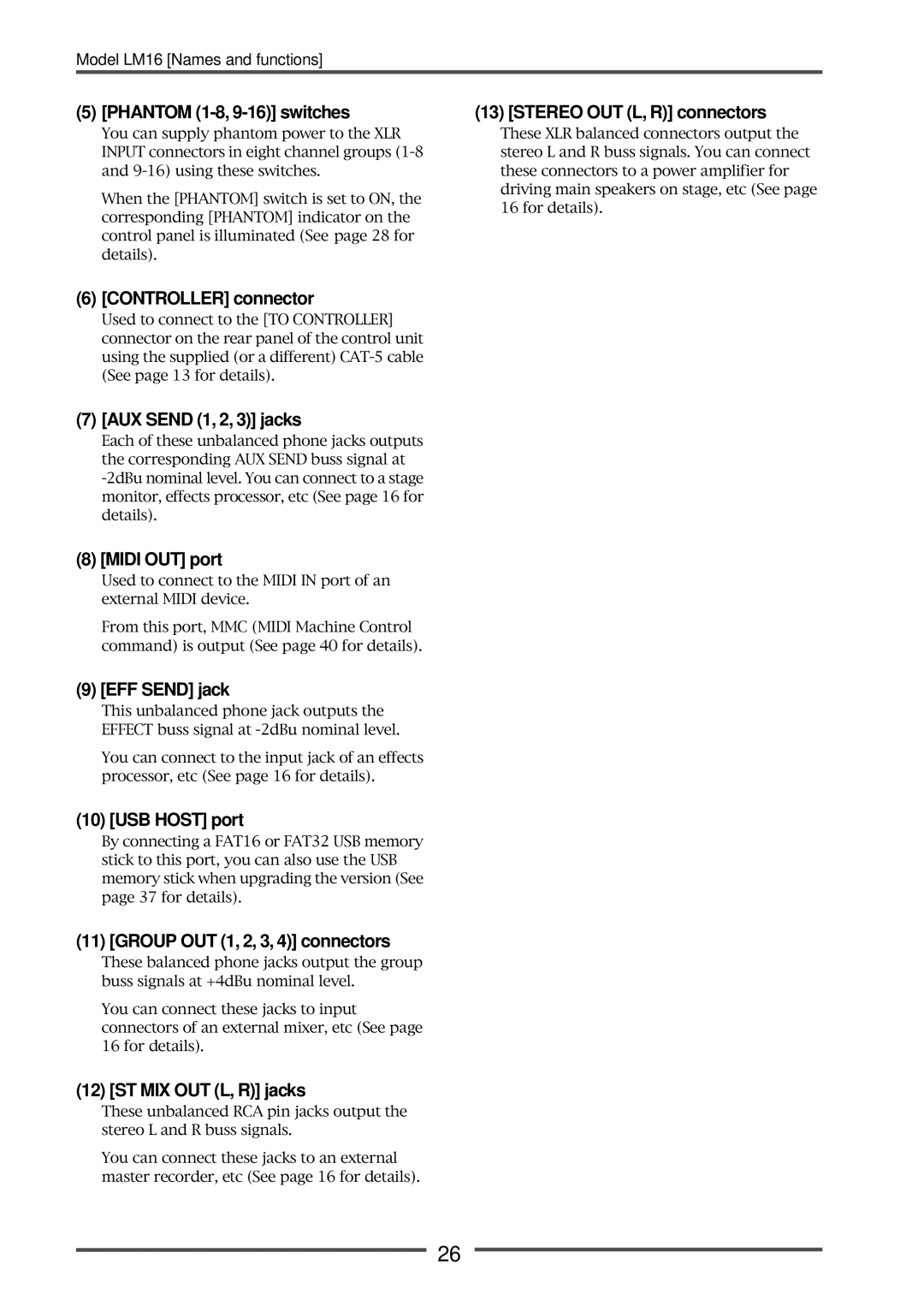
Model LM16 [Names and functions]
(5) [PHANTOM (1-8, 9-16)] switches
You can supply phantom power to the XLR INPUT connectors in eight channel groups
When the [PHANTOM] switch is set to ON, the corresponding [PHANTOM] indicator on the control panel is illuminated (See page 28 for details).
(6) [CONTROLLER] connector
Used to connect to the [TO CONTROLLER] connector on the rear panel of the control unit using the supplied (or a different)
(7) [AUX SEND (1, 2, 3)] jacks
Each of these unbalanced phone jacks outputs the corresponding AUX SEND buss signal at
(8) [MIDI OUT] port
Used to connect to the MIDI IN port of an external MIDI device.
From this port, MMC (MIDI Machine Control command) is output (See page 40 for details).
(9) [EFF SEND] jack
This unbalanced phone jack outputs the EFFECT buss signal at
You can connect to the input jack of an effects processor, etc (See page 16 for details).
(10) [USB HOST] port
By connecting a FAT16 or FAT32 USB memory stick to this port, you can also use the USB memory stick when upgrading the version (See page 37 for details).
(11) [GROUP OUT (1, 2, 3, 4)] connectors
These balanced phone jacks output the group buss signals at +4dBu nominal level.
You can connect these jacks to input connectors of an external mixer, etc (See page 16 for details).
(12) [ST MIX OUT (L, R)] jacks
These unbalanced RCA pin jacks output the stereo L and R buss signals.
You can connect these jacks to an external master recorder, etc (See page 16 for details).
(13) [STEREO OUT (L, R)] connectors
These XLR balanced connectors output the stereo L and R buss signals. You can connect these connectors to a power amplifier for driving main speakers on stage, etc (See page 16 for details).
26
